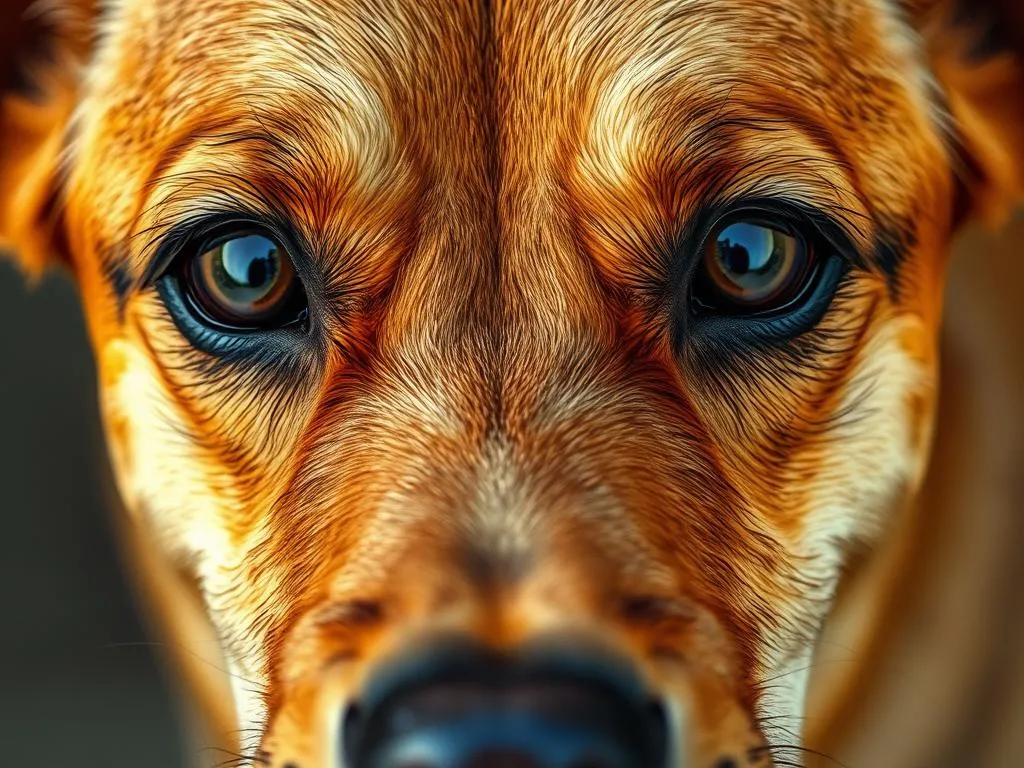
Introduction
Dog health care is an essential aspect of responsible pet ownership. Regular health checks for dogs help detect and prevent various health issues, ensuring that our canine companions live longer, healthier lives. Among the common health concerns faced by dogs, eye health is particularly vital as it can indicate broader health issues.
Watering eyes in dogs can be a common yet alarming symptom for many pet owners. Understanding why dogs’ eyes are watering can lead to timely interventions and better overall health management.
Understanding Dog Eye Anatomy
To comprehend the reasons behind watery eyes in dogs, one must first understand the basic structure of a dog’s eye.
Basic Structure of a Dog’s Eye
A dog’s eye consists of several key components:
- Cornea: The outermost layer that protects the eye and helps focus light.
- Lens: Located behind the cornea, it further focuses light onto the retina.
- Retina: The inner layer that converts light into signals sent to the brain.
- Iris: The colored part of the eye, which controls the amount of light entering.
- Tear glands: Responsible for producing tears that lubricate and nourish the eye.
Function of Each Part
Each part of the eye plays a critical role in vision and eye health. The cornea allows light to enter while protecting against debris. The lens adjusts focus, enabling clear vision at various distances. The retina processes visual information, and the iris regulates light entry, ensuring optimal vision conditions. The tear glands are essential in preventing dryness and maintaining eye health, emphasizing their importance when discussing why dogs’ eyes are watering.
Causes of Watery Eyes in Dogs
Understanding the various causes behind watery eyes in dogs can help owners identify potential health issues.
Common Causes
-
Allergies: Dogs can suffer from environmental allergies, such as pollen, dust, or even food allergies, leading to increased tear production as a reaction.
-
Infections: Conditions such as conjunctivitis, commonly known as pink eye, can cause inflammation and excessive tearing. Other bacterial and viral infections may also contribute.
-
Irritants: Exposure to smoke, chemicals, or foreign bodies can irritate a dog’s eyes, prompting them to water as a protective response.
-
Eye Conditions: Conditions like glaucoma (increased pressure in the eye), corneal ulcers (sores on the cornea), and entropion (a condition where the eyelids turn inward) can all result in excessive tearing.
Less Common Causes
-
Tear Duct Obstruction: Sometimes, the tear ducts may become blocked, preventing tears from draining properly and resulting in watery eyes.
-
Genetic Predispositions: Certain breeds may be genetically predisposed to eye issues that can lead to watering.
Symptoms Accompanying Watery Eyes
In addition to watery eyes, other symptoms may indicate underlying problems.
Common Symptoms
-
Redness of the Eyes: Inflamed or reddened eyes can indicate irritation or infection.
-
Swelling Around the Eyes: Swelling can suggest allergic reactions or infections.
-
Excessive Blinking or Squinting: Dogs may blink frequently or squint due to discomfort or vision problems.
When to Seek Veterinary Care
It’s crucial to monitor your dog’s symptoms closely. If watering eyes are accompanied by signs of pain, discomfort, or if the condition persists without improvement, it’s time to seek veterinary care. Early intervention can often lead to better outcomes.
Diagnosis of Eye Problems in Dogs
Identifying the cause of a dog’s watery eyes typically involves a thorough veterinary examination.
Veterinary Examination
During a veterinary visit, expect a comprehensive assessment, including an examination of the eyes and surrounding areas. The vet will look for signs of redness, swelling, or other abnormalities.
Diagnostic Tests
To pinpoint the issue, several diagnostic tests may be performed:
-
Fluorescein Staining: This test checks for corneal ulcers by applying a fluorescent dye that highlights areas of damage.
-
Tear Production Tests: These tests measure the amount of tears produced over a specific period, helping to diagnose dry eye conditions.
-
Blood Tests for Allergies: If allergies are suspected, blood tests can help identify specific allergens affecting your dog.
Treatment Options for Watery Eyes
Treatment for watery eyes in dogs will depend on the underlying cause.
Home Remedies
Some home remedies may provide relief:
-
Saline Rinses: Gently rinsing your dog’s eyes with a saline solution can help flush out irritants.
-
Natural Antihistamines: Certain natural remedies may alleviate allergy symptoms, but consult your vet before administering any treatments.
Veterinary Treatments
For more severe cases, veterinary treatments may include:
-
Prescription Medications: Antibiotics for infections or antihistamines for allergies can help reduce symptoms.
-
Surgical Options: If structural issues like entropion are present, surgical correction may be necessary.
Preventive Measures
To maintain your dog’s eye health:
-
Regular Eye Cleaning: Gently wiping away discharge can prevent buildup and irritation.
-
Managing Environmental Allergens: Keeping your dog’s environment clean and minimizing exposure to known allergens can reduce symptoms.
Preventing Eye Issues in Dogs
Preventive care is crucial for maintaining your dog’s eye health and overall well-being.
Routine Check-Ups
Regular veterinary visits allow for early detection and management of potential eye issues. During these visits, a thorough examination can help catch problems before they escalate.
Maintaining a Clean Environment
Reducing allergens and irritants at home can make a significant difference. Regularly clean your home, especially areas where your dog spends time, to minimize dust, pollen, and other potential irritants.
Nutritional Support for Eye Health
A balanced diet is essential for maintaining overall health, including eye health. Ensure your dog receives a high-quality diet rich in vitamins and minerals. Some supplements, such as Omega-3 fatty acids, may also support eye health.
When to Consult a Veterinarian
Understanding when to consult a veterinarian is crucial for effective dog health care.
Identifying Urgent Issues
If your dog’s watery eyes are accompanied by severe symptoms such as significant swelling, discharge, or signs of pain (like pawing at the eyes), it’s essential to seek veterinary care immediately. These symptoms can indicate more serious underlying conditions that require prompt attention.
Creating a Health Plan
Developing a regular health plan with your veterinarian can help monitor your dog’s eye health. This may include scheduled check-ups and discussions about any changes in your dog’s behavior or eye appearance.
Conclusion
Understanding why dogs’ eyes are watering is essential for any dog owner. It highlights the importance of proactive health care and the need to monitor changes in your dog’s eye health closely. By recognizing symptoms early, seeking veterinary care when necessary, and maintaining a clean and nourishing environment, you can greatly contribute to your dog’s overall well-being.
As a dog owner, it’s your responsibility to take action when you notice changes in your pet’s health. Foster a healthier environment for your furry friend, and remember that timely interventions can lead to better health outcomes.









